Characteristics of Hawaiian coffee boutique coffee beans grading and brewing flavor in Kona, Hawaii
Professional coffee knowledge exchange more coffee bean information please follow the coffee workshop (Wechat official account cafe_style)
What else is there in Hawaii except the blue sky Baik Woo-Hwa beach! Qianjie must raise his hand and answer, "Kona coffee beans from Hawaii, of course!" The rich maltose flavor and mellow coffee flavor of Kona Coffee have won the hearts of baristas and coffee lovers on the front street. In front of this article, let's talk about the coffee beans on this island.
Let's first broadcast a piece of the latest important news from Kona producing area!
According to foreign media sources, leaf rust began to be found in Hawaii in mid-October 2020, and this is the first time leaf rust has been found in Hawaii. The The Hawaii Department of Agriculture Department of Agriculture (HDOA) reported the disturbing finding to Governor David Ige's office about two weeks ago, about a month after a coffee farm in Haiku, Maui, reported to HDOA symptoms of suspected leaf rust.
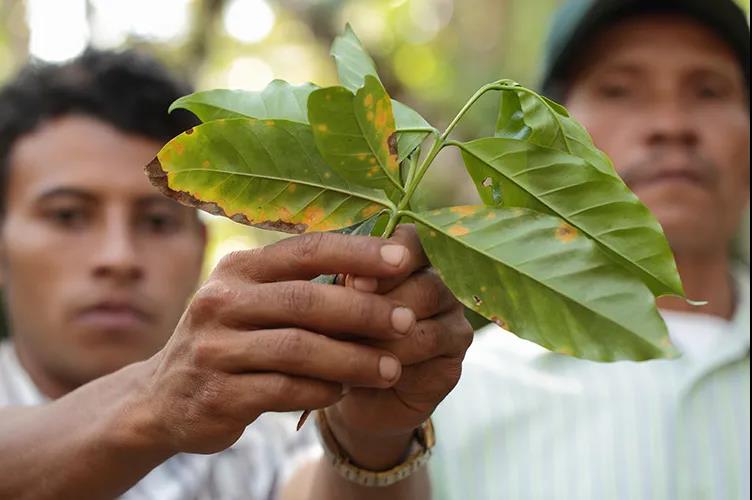
It is not known how leaf rust arrived in Maui, Hawaii, and the timing of its existence is not known. Two weeks later, the USDA's National Identification Service confirmed that coffee leaf rust was also found on the island of Hawaii-in a sample collected by a curry farmer in the Holualoa area south of Kailua-Kona, there was a fungus for leaf rust, officially known as "Hemileia Vastatrix". The gradual discovery of leaf rust in Hawaii poses a serious threat to the Hawaiian coffee industry because the disease can spread rapidly and kill coffee crops in large quantities.
Coffee leaf rust is a highly contagious plant disease, which can destroy coffee crops. Leaf rust mainly occurs in leaves, but rarely occurs in fruits and branches. After the leaf was infected by rust, light yellow water stains appeared on the back of the leaf initially, and there was a light green halo around the spot. When the spot expanded to 5~8mm, the disease part grew orange-yellow powdery spore pile from the stomata, and the spot gradually expanded, several spots connected into large irregular spots, and then the central spot dried up and turned brown, and the brown spot could be seen on both sides of the leaf. Finally, the coffee plant could die in several years.
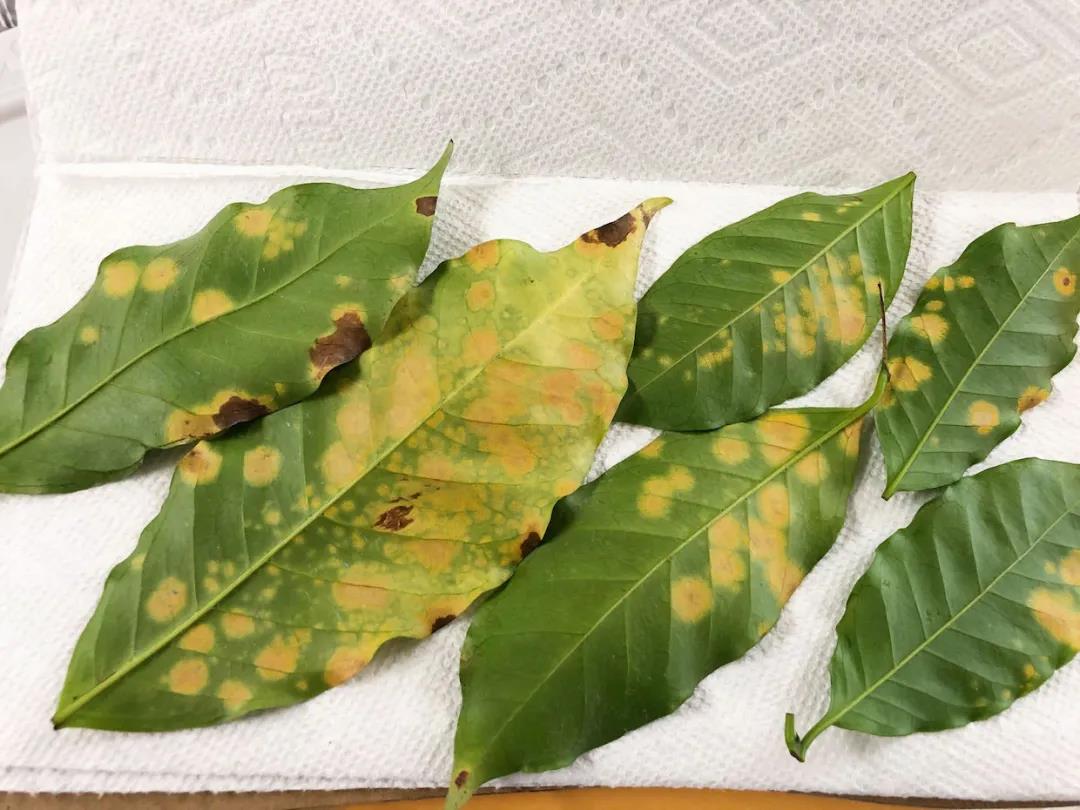
Hawaii's economy mainly comes from tourism, defense industry and agriculture. Among them, agriculture is the pillar of the local economy, mainly producing sugar cane, pineapple, bananas and coffee. The annual output of sugarcane is as high as 1 million tons, accounting for a major part, but coffee can not be ignored. According to the Hawaiian Department of Agriculture, more than 7200 acres of coffee in Hawaii will produce 5.7 million pounds of raw beans a year, with a coffee production value of $54.3 million in 2019. The Kona region, where leaf rust was found, is also a major coffee-growing area in Hawaii. Kona coffee from Hawaii uses beans grown on volcanic terrain. At the same time, there is a high density of artificial farming, so each bean can be said to be spoiled, the price is naturally expensive, second only to the Blue Mountains. Hawaiian Kona beans are evenly shaped and have a strong sour and sweet taste. Therefore, the emergence of leaf rust caused the Hawaiian government to attach great importance and began to take measures to prevent it.
Coffee producing areas in Hawaii are affected by insect infestation
In addition to this year's discovery of leaf rust that may affect Kona coffee production in Hawaii, there was a pest outbreak in Hawaii a few years ago. The sudden surge in the price of Kona coffee is also due to the 2010 insect plague. In 2010, Hawaii was invaded by fruit insects, and the island's boutique coffee producing areas of Kona and plus fog suffered the worst. Coffee production on the island plummeted by 50%. Later, through the control of pesticides and biological beetles, Kona coffee production recovered more than 40% in 2015. Although the disaster has been brought under control, the number of Rain Water on the island has decreased in recent years, which has affected the Kona producing area. due to the decreasing production of coffee beans and the high market demand, the price has been close to that of Blue Mountain Coffee in recent years.
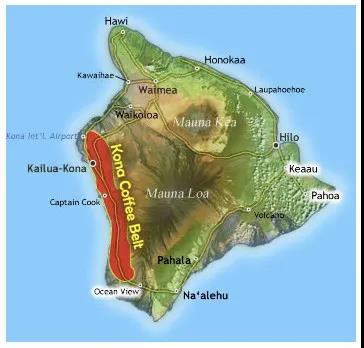
Kona coffee producing area
The Kona area, located in the southwest of the island, is 20 miles long and 2 miles wide and covers the slopes of Hualalai and Mauna Loa. Between 300 and 1100 meters above sea level, it is the most suitable environment for coffee trees to grow. As a result, the slopes of Horala and Mauna are covered with coffee trees. Only coffee beans grown in this area and subject to the most stringent certification standards can be sold under the brand name Kona. Qianjie coffee passed the cup test and agreed that the whole is mainly nut-based, such as walnuts, coupled with berries such as Brin plums, creamy sweetness, clean and rich in layers.
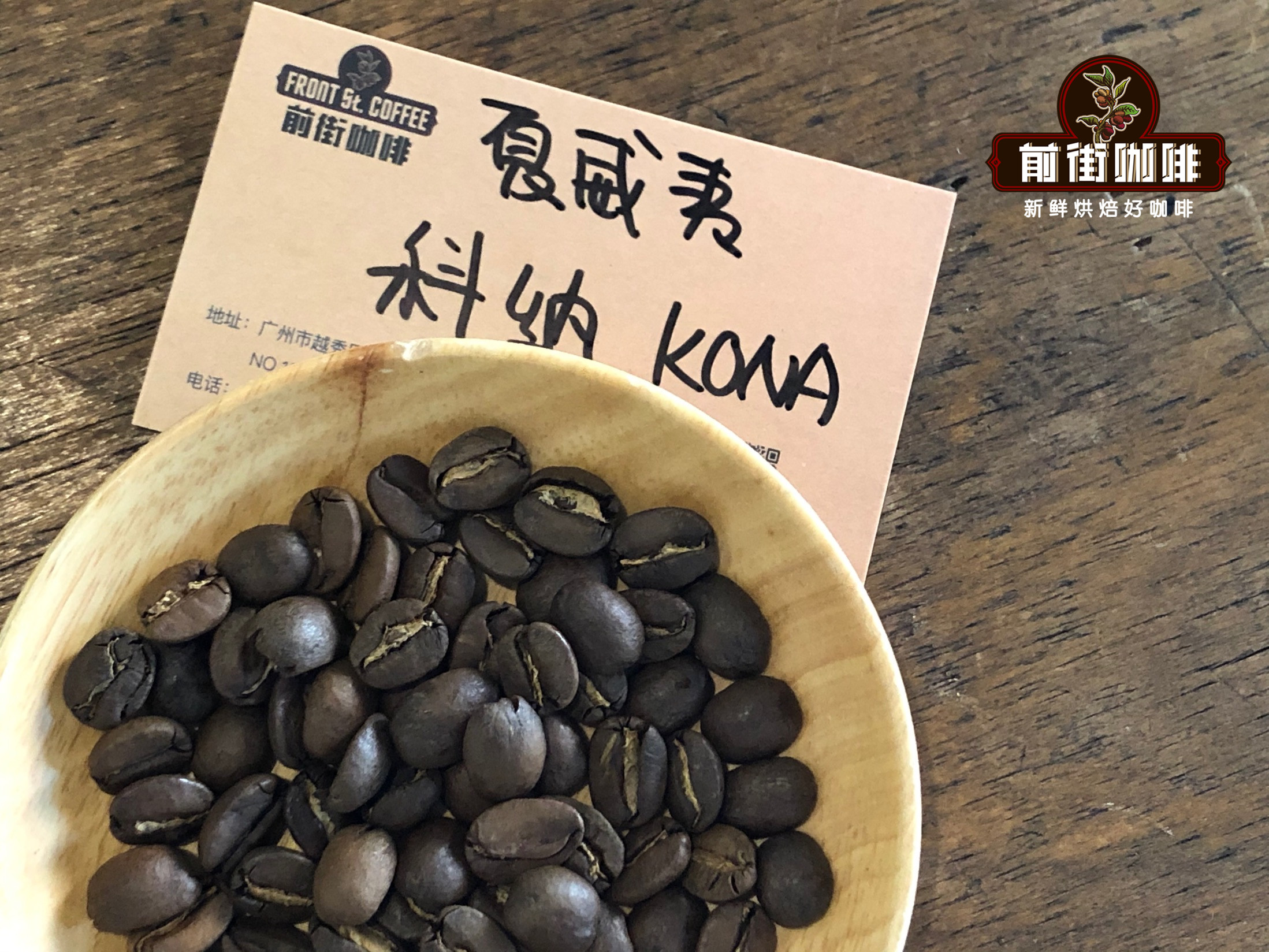
Front Street Coffee-Hawaii Kona Coffee beans
Producing area: Kona producing area
Manor: Queen's Manor
Altitude: 1100m
Variety: iron pickup
Treatment method: washing treatment method
Iron pickup coffee variety
Typica is the oldest native variety in Ethiopia, and almost all coffee beans that Arabica now belongs to are derived from Ironpickup. Iron pickup has an elegant flavor, but its physique is weak, its disease resistance is low, and it is easy to be infected with leaf rust. The output of coffee beans is small, so it can not be economical. Kona's iron pickup was introduced from Guatemala in 1892. Kona's tin beans are huge and grow at an altitude of 600-1100m. Kona's altitude is lower than that of other coffee-producing countries, but on the island of Hawaii, Kona is high altitude. Some people have tried to transplant Kona's iron pickup to other islands, but because the temperature of other islands is too high and the altitude is too low, the iron pickup does not grow smoothly, so it cannot produce the soft and sour fragrance unique to Kona.
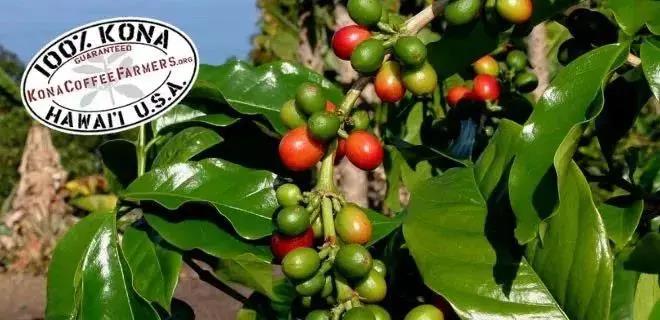
Kona coffee treatment method
Kona production area is mainly water washing method. The biggest difference from the sun method is the use of fermentation to remove the pectin layer. After completing the fermentation and removing the pectin, the coffee beans will be cleaned again because the fermentation bacteria and impurities will remain on the coffee beans. In order to clean, this step will consume a lot of water, and then the fruit will be dried and shelled. Hawaii's clean and sweet mountain spring water provides the ideal conditions for Kona coffee beans to be washed, which creates the bright appearance and pure and fresh taste of Kona coffee beans.
Experience of roasting Kona Coffee in Front Street Coffee
Qianjie baker uses Yang family 800N, raw beans 550g. Put the furnace temperature to 200 degrees Celsius, adjust the firepower to 150 degrees after opening the throttle for 1 minute, keep the throttle unchanged, bake to 5 degrees 35 ", the temperature is 150 degrees, the bean surface turns yellow, the smell of grass completely disappears, the dehydration is completed, the firepower is adjusted to 140 degrees, and the throttle is changed to 4. In the 9th '30th minute, ugly wrinkles and black markings appear on the bean surface, and the smell of toast obviously changes to the smell of coffee, which can be defined as a prelude to an explosion. At this time, listen carefully to the sound of the explosion point, start the explosion at 9: 30 ", lower the firepower to 70 degrees, the throttle should be fully open (adjust the firepower to be very careful, not so small as to be free of bursting sound), turn off the heat at 182 degrees, and put the pot at 193.4 degrees.
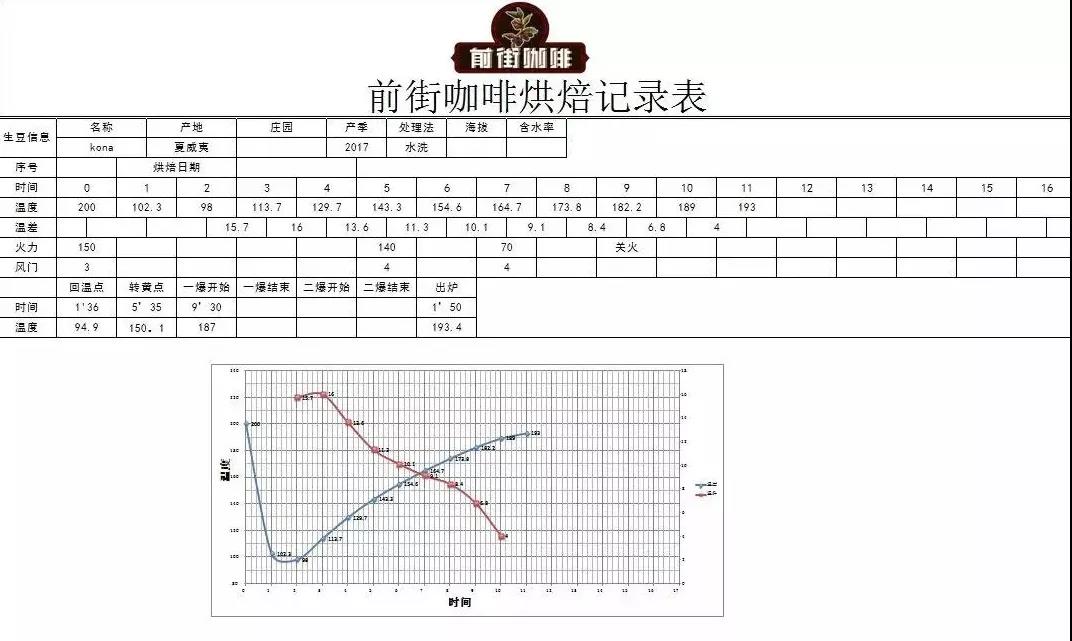
Experience of brewing coffee in Qianjie
Filter cup: Kono
Water temperature: 89-90 degrees
Degree of grinding: fine sugar size / 20 sieve bowl sieve powder to 80%
Ratio of powder to water: 1:15
Amount of powder: 15g
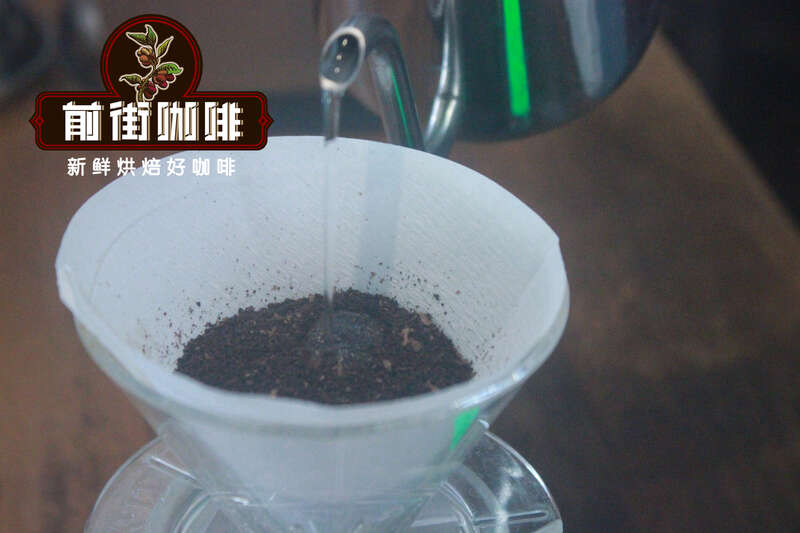
Qianjie coffee is extracted by stages, that is, three-stage water injection, 30 grams of water stuffy steam for 30 seconds, the second small flow circle water injection to 125 grams off water, waiting for the water to drop and then slowly water injection, the speed is uniform, the water level should not be too high, the water injection should be stopped at 225 grams again, and the extraction time is 2 minutes-2 minutes and 10 seconds (including steaming time).
Brewing flavor: balanced and warm sweet osmanthus honey and elegant fullness not thick taste, brewing coffee emitting mulberry aroma makes people feel sweet and happy, the aftertaste has a smooth malt taste, cold down like a cup of mulberry tea.
For more boutique coffee beans, please add private Qianjie coffee on Wechat. WeChat account: kaixinguoguo0925
Important Notice :
前街咖啡 FrontStreet Coffee has moved to new addredd:
FrontStreet Coffee Address: 315,Donghua East Road,GuangZhou
Tel:020 38364473
- Prev
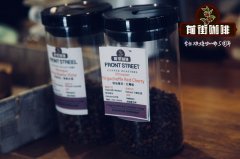
Is Hawaiian Kona coffee good? why is it so expensive? how to brew Hawaiian Kona coffee beans?
Professional coffee knowledge exchange more coffee bean information please follow the coffee workshop (Wechat official account cafe_style) Hawaii KONA Hawaii Kona 01 | production profile in Hawaii (Hawaii) after nearly two centuries of efforts to grow coffee, the term Kona is almost synonymous with "quality". But historically, since 1825, coffee trees have been the first.
- Next
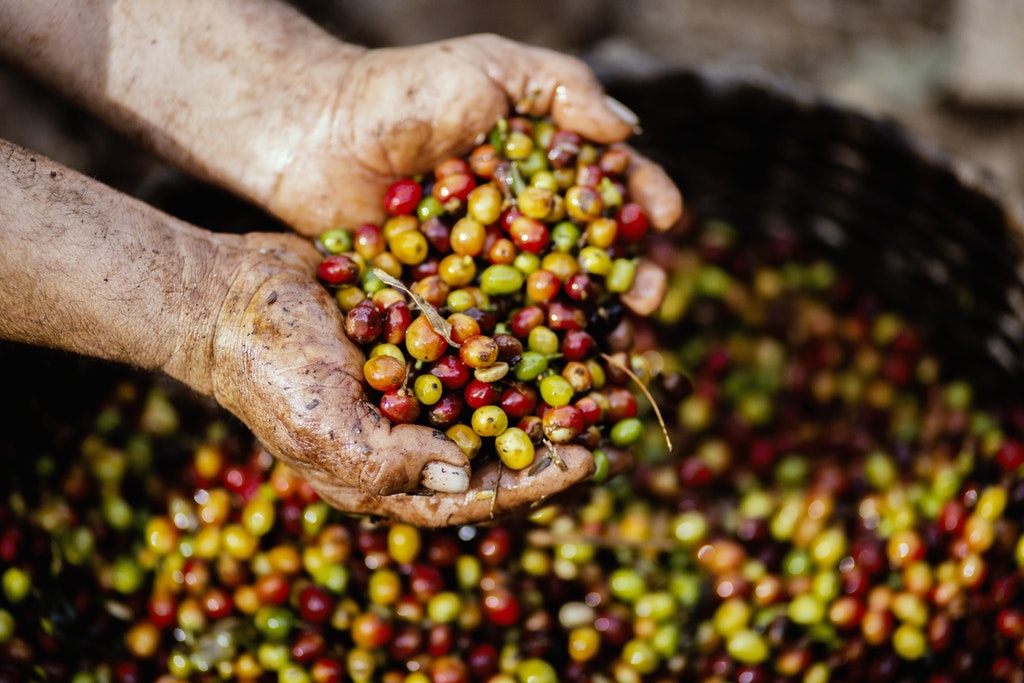
If you don't understand the regional flavor and characteristics of individual coffee, don't say you know coffee.
Professional coffee knowledge exchange more coffee bean information Please follow the coffee workshop (Wechat official account cafe_style) as people in the coffee industry, one of the questions we are most often asked is: which kind of coffee do you like best? The answer that ordinary people can think of may be Cappuccino or Cafe Latte, but in fact, in most relationships
Related
- Detailed explanation of Jadeite planting Land in Panamanian Jadeite Manor introduction to the grading system of Jadeite competitive bidding, Red bid, Green bid and Rose Summer
- Story of Coffee planting in Brenka region of Costa Rica Stonehenge Manor anaerobic heavy honey treatment of flavor mouth
- What's on the barrel of Blue Mountain Coffee beans?
- Can American coffee also pull flowers? How to use hot American style to pull out a good-looking pattern?
- Can you make a cold extract with coffee beans? What is the right proportion for cold-extracted coffee formula?
- Indonesian PWN Gold Mandrine Coffee Origin Features Flavor How to Chong? Mandolin coffee is American.
- A brief introduction to the flavor characteristics of Brazilian yellow bourbon coffee beans
- What is the effect of different water quality on the flavor of cold-extracted coffee? What kind of water is best for brewing coffee?
- Why do you think of Rose Summer whenever you mention Panamanian coffee?
- Introduction to the characteristics of authentic blue mountain coffee bean producing areas? What is the CIB Coffee Authority in Jamaica?

